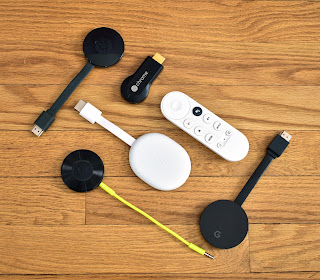 |
| Image: NBC/Universal |
I've spent over a decade streaming, using a variety of devices over the years. I've tried a variety of devices over that time, and I've spent a lot of money trying to get it right.
I've not tried every device on the market, but I have tried the major players: Roku, Amazon Fire TV, Apple TV, Google Chromecast, TiVo, and others.
So, what's the perfect streaming device? Well, that's not an easy question to answer. You have to consider several things.
- Does the device carry the apps you want?
- Is the device easy to use?
- Is the device reliable?
So, with those things in mind, what's the answer? That's easy. The perfect streaming device is ... non-existent.
Oh, sure, some devices come close, but no device carries all the apps. There are some that aren't available on Roku, but are available on Apple TV, for instance. There are some that are only on Roku. Some are on Fire TV, but have a different, inferior version on another platform.
Sure, there is a difference between a device carrying all the apps and a device carrying the apps you want. For example, if all you want is Netflix, Hulu, and Prime Video, then any of the Big Four -- Roku, Amazon Fire, Apple TV, Chromecast -- will do that.
But what about apps you don't know about? There may be some perfect app, a niche app, that has something that is just up your alley. But that app may only be available on Roku. If that's the case, Roku is your perfect device. But what if another device has a different app that is another service that is for you? Then it's that device. And what if these other two perfect apps are on two different devices?
What if all the Big Four carry all the apps you truly do want? Well, is it easy to use? One thing I live about Roku and Apple TV is that the menu layout is consistent. Amazon Fire TV devices move things around on the menu, though. If you use an app, it moves it to the front of the menu so you can easily use it again. That's fine, if you like that, but if you prefer everything in its place all the time, that will drive you crazy.
And what abut reliability? The Big Four are reliable devices. Well, sort of. Apple TV is certainly a great device. And the upper tier Roku devices are fantastic, but I'm not that big of a fan of the lower, entry-level devices. And I've previously mentioned that I consider Amazon Fire TV to be underpowered devices, almost to the point of planned obsolescence. Chromecast has been good, but as they are the latest entry into the mix (of the Big Four) they're still working out the bugs. But I do like them.
If you had asked me five years ago, I would have said Apple TV was the closest to perfect device. More recently, I would have said Roku. Next year, who knows?
I have multiple devices hooked up to my TVs. I have Chromecast on some, Apple TV on some, but I have Roku on them all. So, no matter what I say, my actions say that I'm in Camp Roku.
I'm okay with that. But if Apple TV, or Fire TV, or Chromecast is your device of choice, you've made a good choice.








